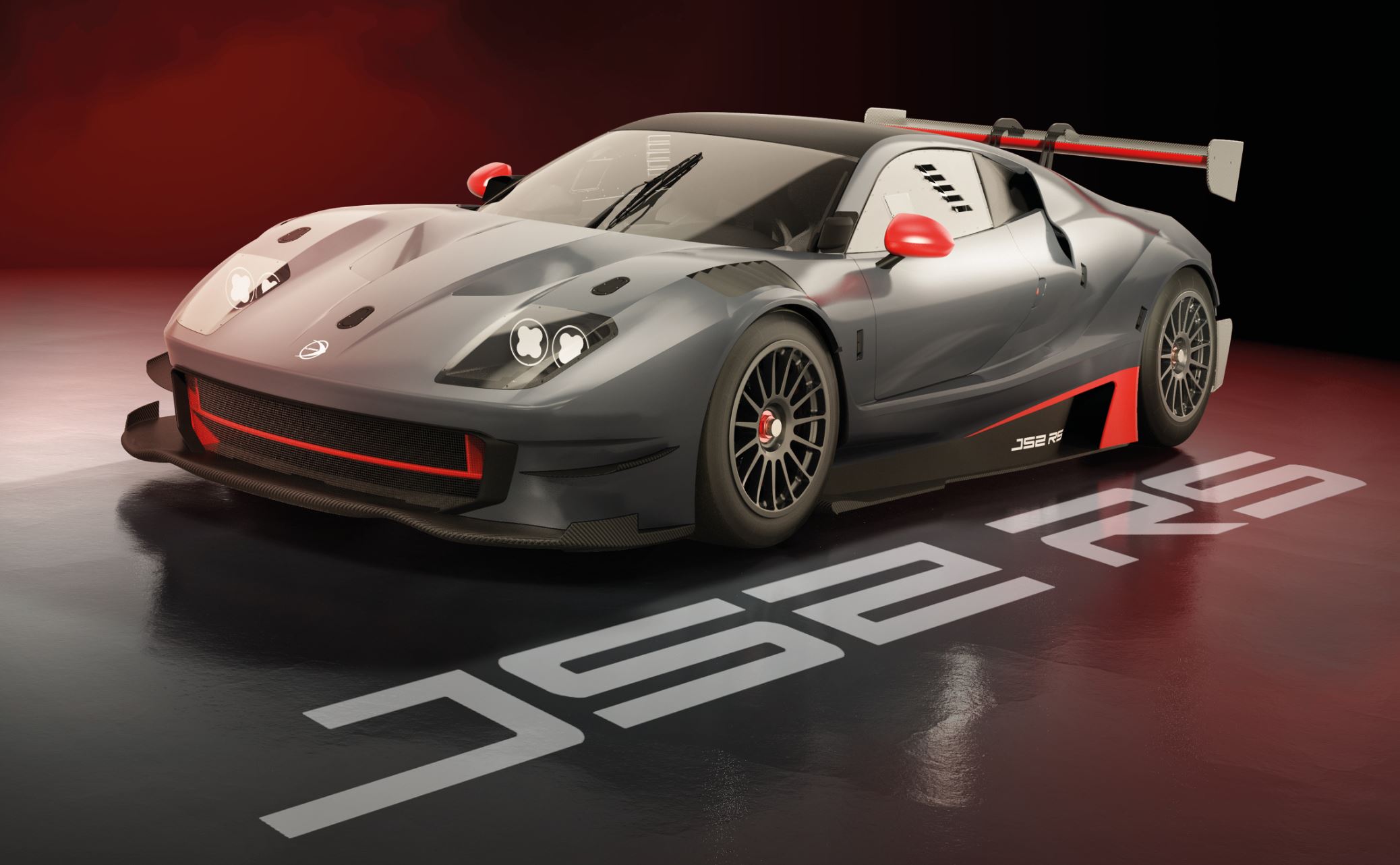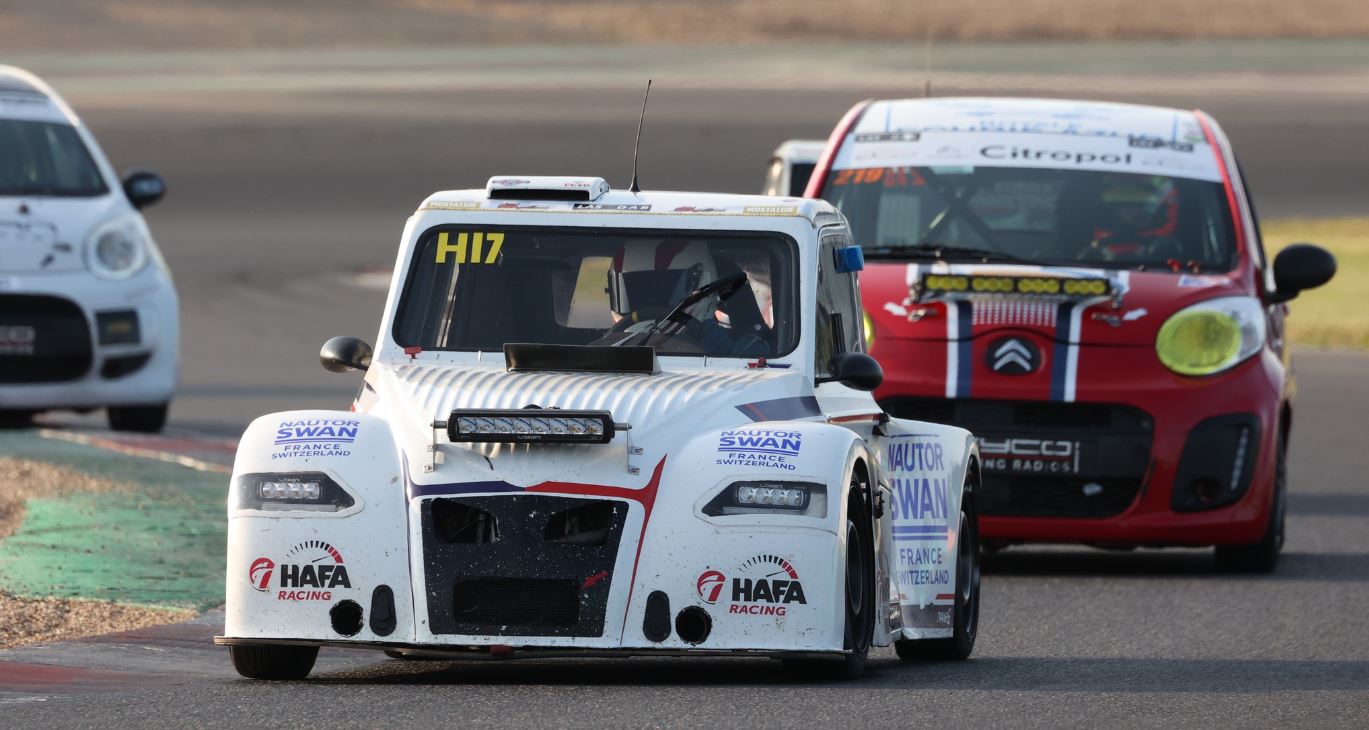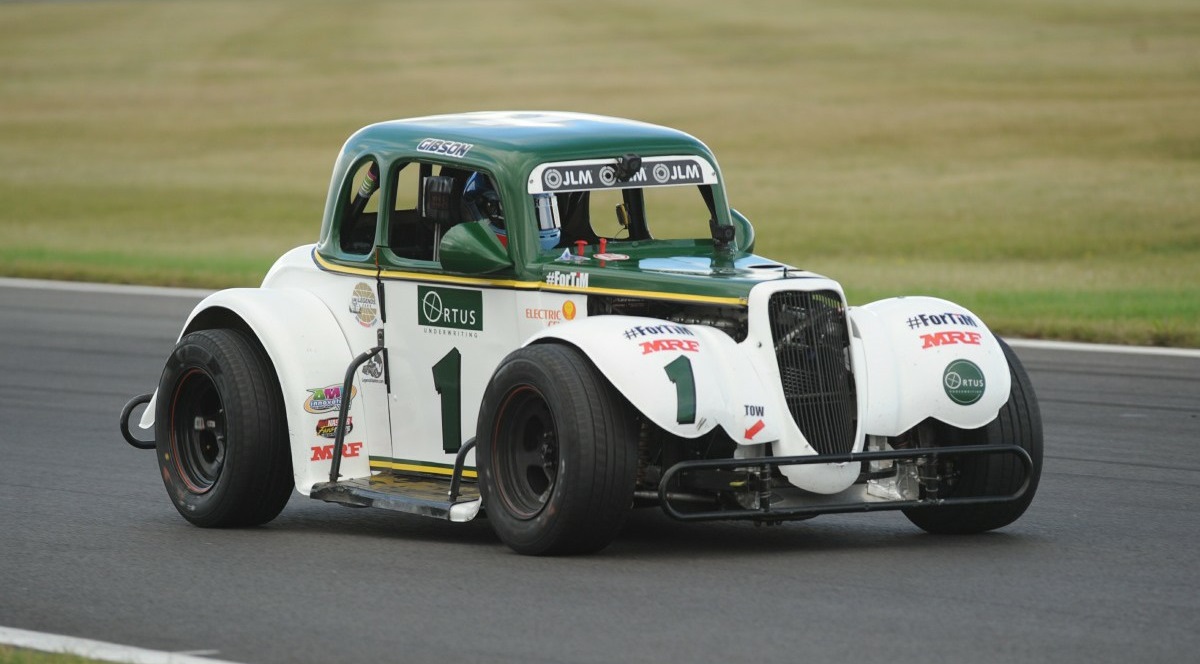All you need to know about LMP3 : performance and pricing
By RobinB on 30 September 2024 Circuit / RaceWhat is the LMP3 category?
Created in 2015 by the Automobile Club de l'Ouest (ACO), the LMP3 (Le Mans Prototype 3) category offers an accessible entry point into the world of endurance racing. These cars, with a carbon fiber chassis and standardized engines, are designed for controlled costs while allowing drivers to prepare for higher categories.
In the hierarchy of Le Mans prototypes, LMP3s are positioned below LMP2 and Hypercars, offering an ideal compromise between performance and accessibility for teams looking to progress to a higher level.
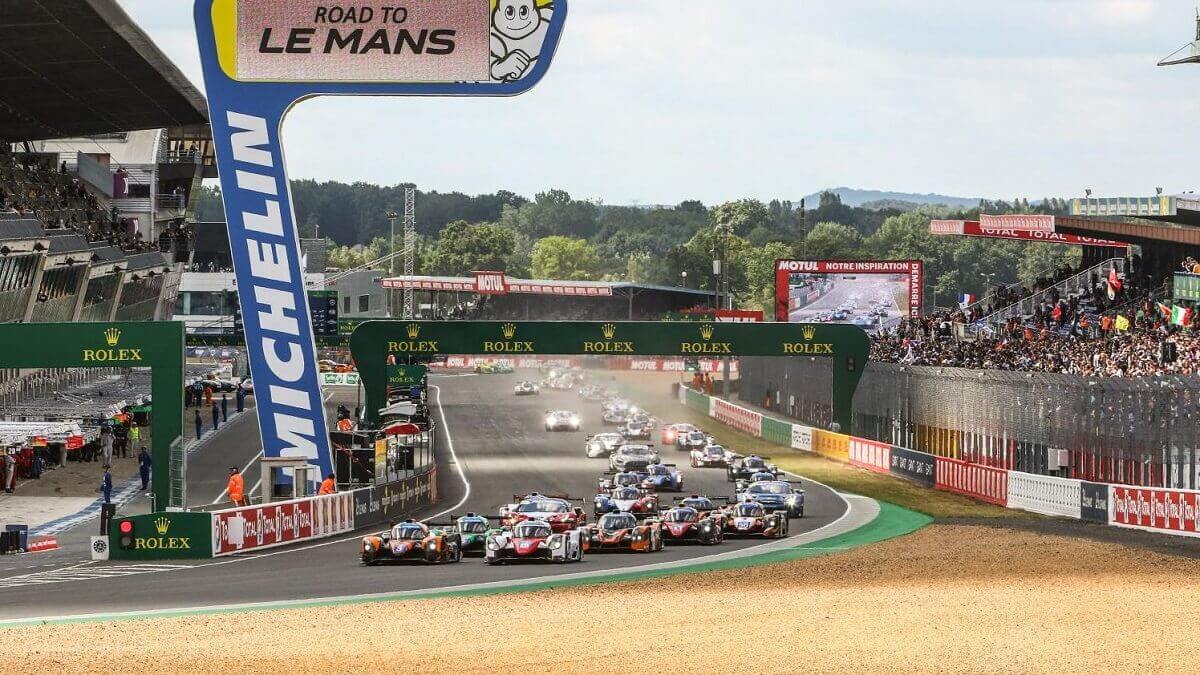
Who are the LMP3 manufacturers?
Today, four manufacturers offer LMP3 prototypes that comply with ACO regulations. Ligier and Duqueine dominate the market, while Ginetta and ADESS, although present, occupy a smaller share with fewer models produced and used in competition.
Ligier and Duqueine: Market leaders
Ligier and Duqueine dominate the LMP3 category with their respective models, the JS P320 and the D08. The Ligier JS P320 is particularly popular, representing the vast majority of cars entered in championships like the Michelin Le Mans Cup and ELMS. For instance, in 2024, 25 of the 29 cars entered in the Michelin Le Mans Cup were Ligiers, accounting for more than 85% of the grid.
Ginetta and ADESS: A more limited presence
Ginetta, a pioneer in the category, and ADESS, with its model AD25, are less represented in current competitions. Although Ginetta was one of the first to launch a model that meets LMP3 specifications, its involvement has diminished over time. ADESS continues to innovate with designs focused on performance and safety, but remains in the background on the grids. The third generation of LMP3 coming in 2025 could shake things up.
Onboard camera in an LMP3 at Le Mans
What is the price of an LMP3? (New and used)
Price of a new LMP3
Until now, the price of a new LMP3 was capped at €239,000 excluding tax by the ACO, including chassis, engine, and essential components. For the third generation in 2025, the announced price is €299,000 excluding tax, of which €209,800 is for the chassis and €89,200 for the new powertrain.
Used LMP3 market
Prices for used LMP3s vary depending on the age, condition, history of the car, and available spare parts. For example, a Ligier JS P320 that has raced in the Michelin Le Mans Cup might sell for around €180,000 excluding tax. Other models, depending on their mileage and updates, may be available between €100,000 and €150,000.
Looking for a car to buy or rent? You can find ads for prototypes and LMP3s on GoToTheGrid.
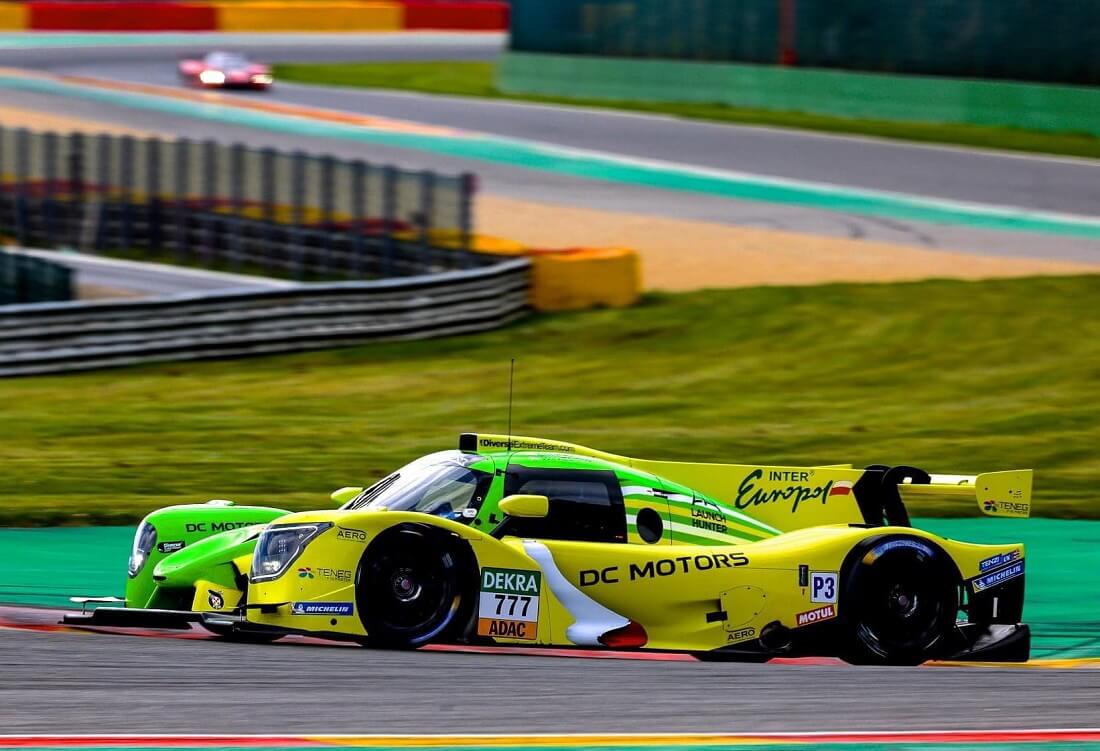
What is the cost of a season in LMP3?
The cost of a full season in LMP3 varies depending on the series chosen. For the Michelin Le Mans Cup, the total budget is around €450,000, while the European Le Mans Series (ELMS) can exceed €700,000 due to the length of the races and the level of competitiveness.
- Registration fees: around €50,000 for the Michelin Le Mans Cup, including all races in the season, including prestigious events like "Road to Le Mans." For the ELMS, the registration fee is around €90,000.
- Team fees: including salaries for engineers, mechanics, and other technical staff, these costs generally range between €120,000 and €180,000 depending on the team's experience.
- Maintenance and repairs: budget approximately €100,000 to €140,000 for engine, gearbox, and other critical component overhauls, depending on usage intensity.
- Tires and fuel: Tires are a significant expense, with total costs reaching up to €60,000 per season. Fuel is also a factor to consider.
- Logistics: Transporting the cars, spare parts, and equipment, as well as travel and accommodation expenses for the team, adds about €40,000 to €60,000 to the total budget.
In addition to this budget, the driver will need to cover their own travel expenses as well as any test days. It is also recommended to subscribe to insurance in case of accidents or off-track excursions, as repairs can quickly inflate the season's budget.
Cost differences between series
The cost of a season in LMP3 varies significantly depending on the series. The European Le Mans Series (ELMS), with its 4-hour races on iconic circuits like Spa and Portimão, is more expensive due to the race length and level of competitiveness. In contrast, the Michelin Le Mans Cup, with 110-minute races, is more accessible for teams with modest budgets, particularly beginners or amateurs.
Price of a trackday or driving course in LMP3
To prepare for a competition or experience LMP3 during a 200 to 300 km driving day, the cost ranges between €15,000 and €25,000, depending on the team, circuit, and chosen options (insurance, tires, etc.).
Technical specifications of an LMP3 (2024)
LMP3s are lightweight and affordable endurance prototypes, with a carbon fiber chassis for ensuring safety and aerodynamic efficiency.
- Minimum weight: 950 kg
- Engine: Nissan VK56 V8, 5.6 liters, 455 hp
- Top speed: 290 km/h (or more, especially on the Le Mans circuit)
- Transmission: 6-speed sequential gearbox
- Fuel tank: 100 liters max
- Brakes: Steel discs, max diameter 355.6 mm
- Dimensions: Length 4,650 mm, width 1,900 mm
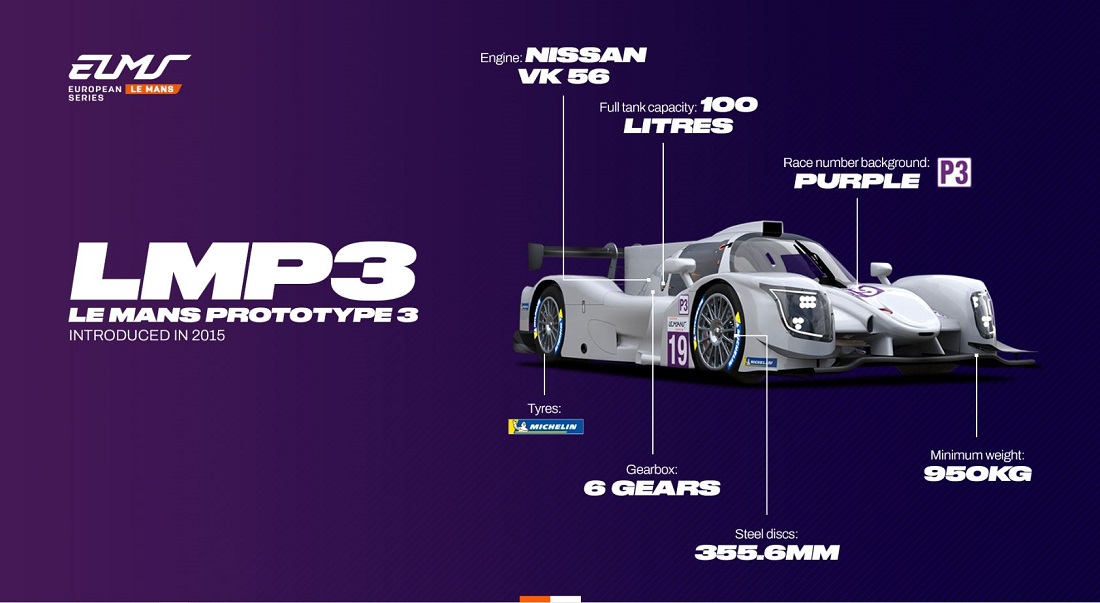
The new generation of LMP3 for 2025
In 2025, the third generation of LMP3 will be introduced with major changes, including a 3.5-liter twin-turbo V6 engine developed by Oreca, replacing the current Nissan VK56 V8. The new models, such as the Ligier JS P325, the Duqueine D09, and the ADESS AD25, optimize performance and safety with improvements in cooling, wiring, and bodywork.
Upgrade kits will be available to adapt older models, but their high cost (about €60,000 for the chassis and €60,000 for the powertrain) often makes buying a new car more attractive for teams.
These changes aim to keep LMP3s competitive until 2029, offering stability and allowing investments to be amortized over the long term.
The new LMP3s in photos
Ligier JS P325
Duqueine D09
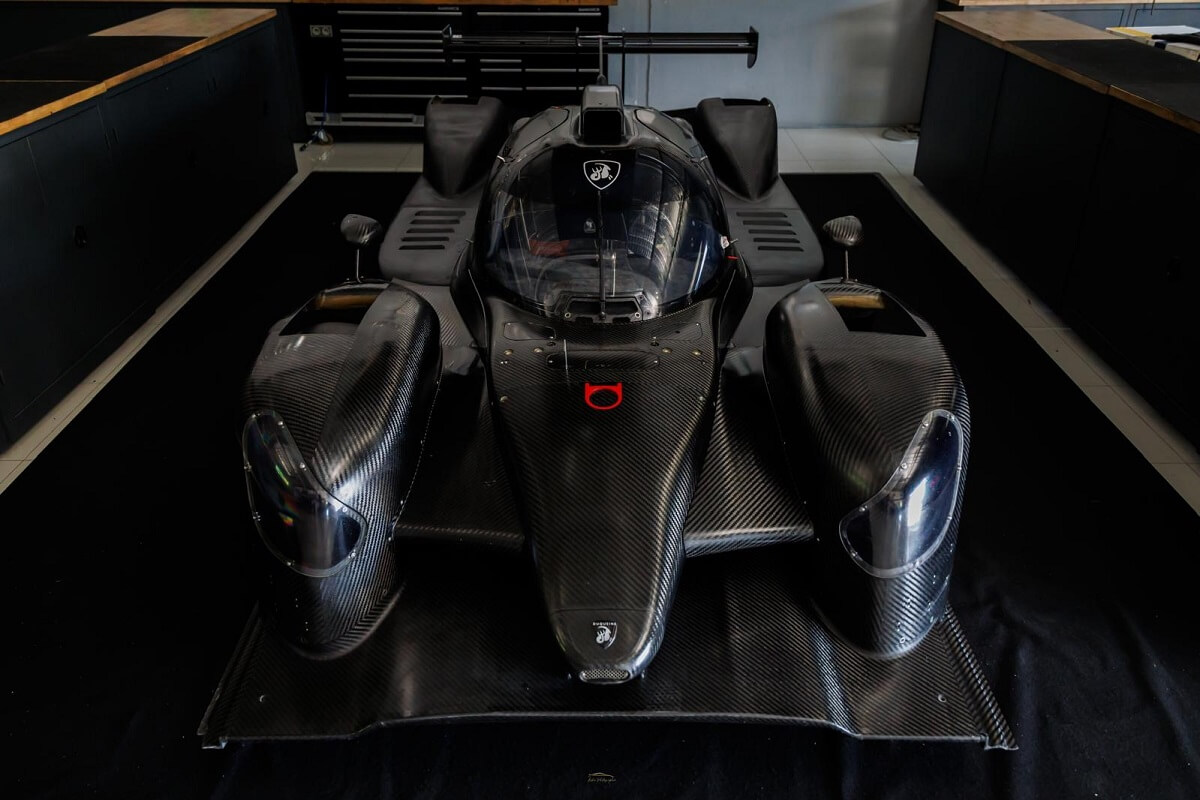
ADESS AD25
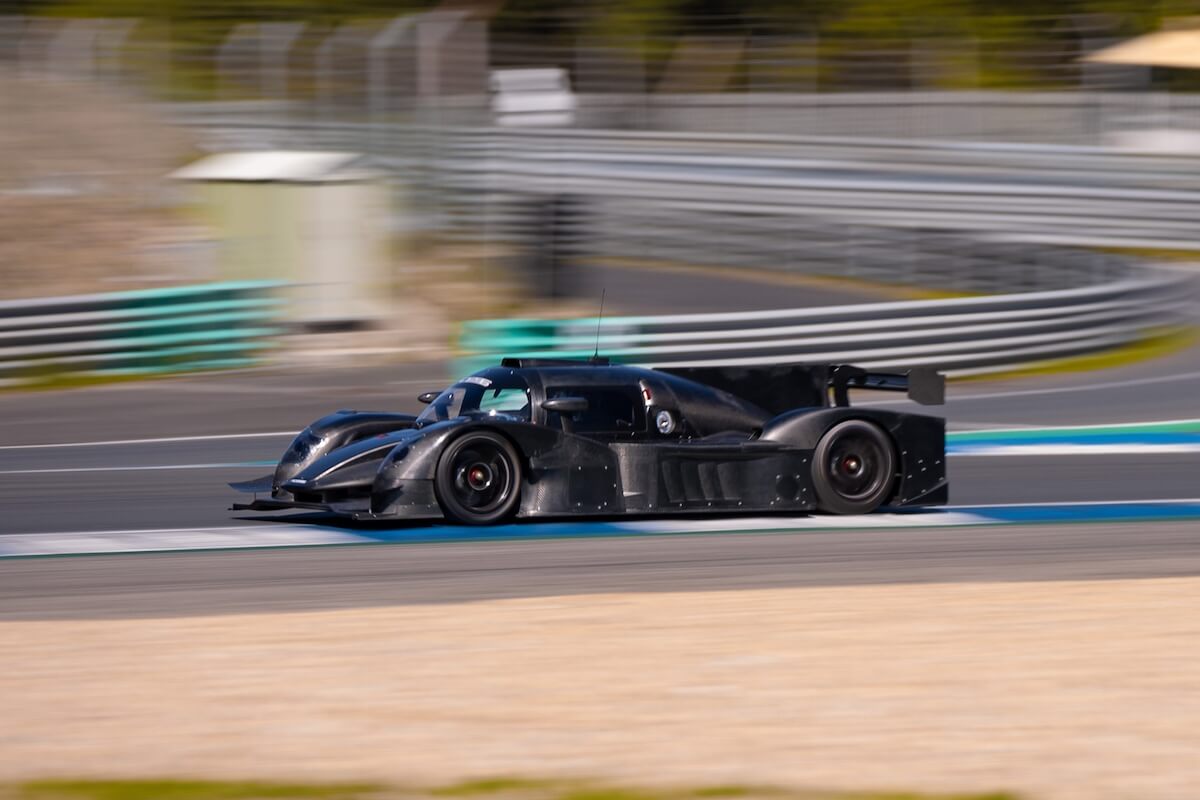
Ginetta G51-LT-P3 Evo
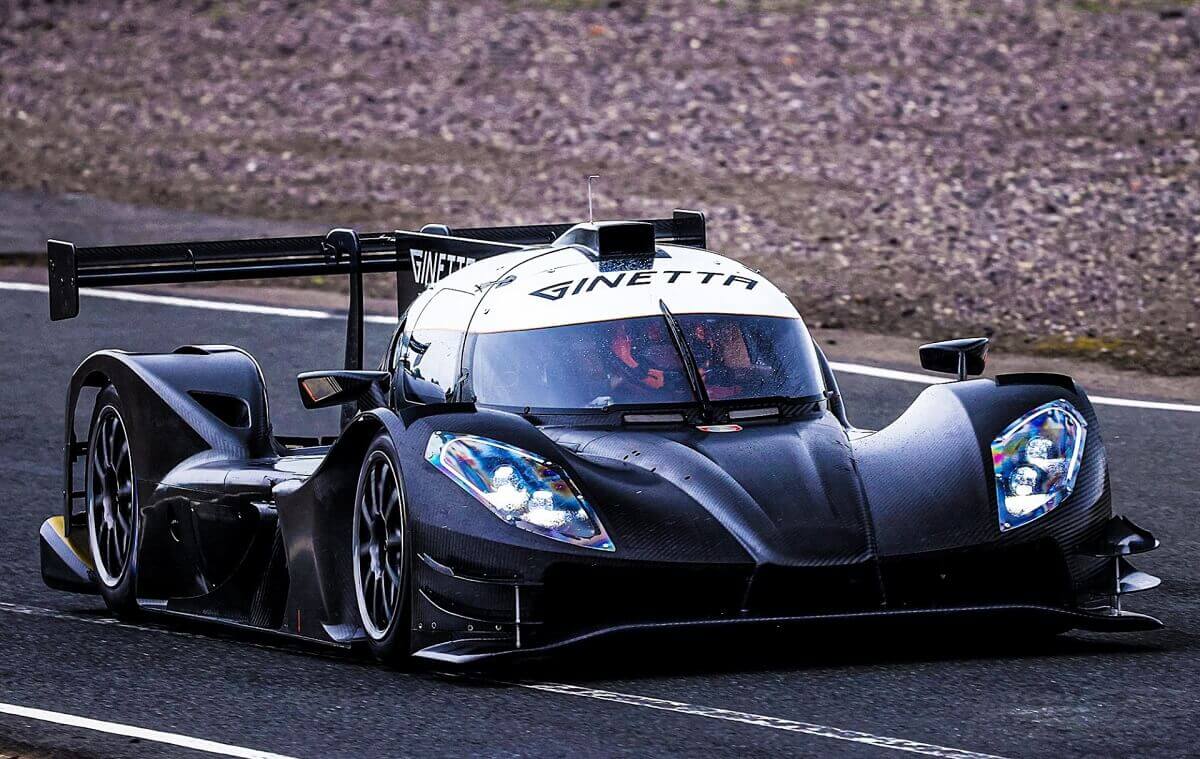
Comparison of LMP3 performance with other categories (Hypercar, LMP2, GT)
Here is an overview of the best lap times on the full Le Mans circuit, taken from the qualifying sessions of the 24 Hours of Le Mans (WEC) and Road to Le Mans (LMC) for LMP3 in 2024.
- Hypercar: 3’24’’634 (Porsche 963 - Porsche Penske Motorsport / Kévin Estre)
- LMP2: 3'33"217 (Oreca 07-Gibson - AO by. TF / Louis Delétraz)
- LMP3: 3’48’’111 (Ligier JS P320 - Cool Racing / Adrien Closmenil)
- LMGT3: 3'58"120 (McLaren 720S GT3 EVO - Inception Racing / Brendan Iribe)
LMP3 vs. LMP2
LMP3 cars, powered by a 455 hp Nissan V8 engine, are significantly less powerful and less aerodynamically advanced than LMP2, which use a 560 hp Gibson engine. This results in lap times approximately 15 seconds slower at Le Mans. LMP2 cars also have carbon brakes, providing more efficient braking, and superior handling, making the driving experience more precise. The performance gap is also evident in traffic management: while LMP2 can more easily overtake GTs and other competitors, LMP3 drivers need more patience and planning.
LMP3 vs. Hypercar (LMH)
Hypercars (formerly LMP1), at the peak of technology with around 680 horsepower, far exceed LMP3s in terms of power and aerodynamics. They reach top speeds of around 330 km/h, compared to around 290 km/h for LMP3s. This performance difference translates not only into much faster lap times but also into an ability to maintain stability and high speed throughout the circuit, making Hypercars unbeatable in a direct comparison.
LMP3 vs. LMGT3
Compared to LMGT3 cars, which produce between 500 and 600 horsepower, LMP3 cars are lighter and faster, but they offer less comfort and tolerance. LMGT3 cars, with their higher weight and more accessible handling, are designed for optimal performance on a variety of circuits, but they cannot compete with LMP3s in terms of speed and aerodynamic efficiency. However, in certain parts of the circuit, particularly tight corners or on worn tires, LMP3 and GT performance can sometimes be closer.
Which championships can you race in with an LMP3?
LMP3 cars compete in many prestigious series worldwide. There are around ten championships that host LMP3s in Europe, the United States, and Asia. Here are the main series where LMP3 cars race:
1. European Le Mans Series (ELMS)
The ELMS is one of the most prestigious championships for LMP3 prototypes in Europe. The races take place on legendary circuits such as Spa-Francorchamps, Monza, and Portimão. LMP3 cars play a key role, giving young drivers the chance to gain experience in 4-hour races, while also aiming for invitations to participate in the 24 Hours of Le Mans, the world’s most famous endurance race.
2. Asian Le Mans Series (ALMS)
The Asian Le Mans Series, which takes place on renowned Asian circuits such as Yas Marina (Abu Dhabi) and Sepang (Malaysia), offers a similar platform to the ELMS. This series allows teams and drivers to make a name for themselves on the international stage and hope to win invitations to the 24 Hours of Le Mans, attracting teams from around the world.
3. Michelin Le Mans Cup
The Michelin Le Mans Cup focuses on amateur drivers (gentlemen drivers) and offers 2-hour races on Europe’s most prestigious circuits. It often serves as a stepping stone to more demanding competitions such as the ELMS. The highlight of the season is the double event "Road to Le Mans", which allows drivers to race on the famous Le Mans circuit alongside the 24 Hours of Le Mans.
4. IMSA VP Racing SportsCar Challenge and HSR Prototype Challenge
In the United States, LMP3 cars continue to stand out in the IMSA VP Racing SportsCar Challenge and the HSR Prototype Challenge. The IMSA Challenge offers sprint races, ideal for developing traffic management skills and multi-class strategies on legendary circuits such as Daytona and Sebring. The HSR Prototype Challenge, launched in 2024, combines sprint and endurance races, offering teams and drivers a unique opportunity to diversify their skills.
Since 2024, LMP3 cars are no longer allowed to participate in the WeatherTech SportsCar Championship (IMSA). This decision was made to refocus the championship on more competitive categories, such as GTP (equivalent to LMDh) and LMP2. In response, LMP3 cars now compete in other adapted series, such as the IMSA VP Racing SportsCar Challenge and the HSR Prototype Challenge, offering opportunities for teams and drivers seeking development.
5. Ultimate Cup Series, Prototype Winter Series, and Prototype Cup Germany
These European series offer opportunities for LMP3 cars outside the traditional ACO frameworks. They are popular among teams and drivers looking to gain experience in a competitive environment, but with lower operating costs. These championships play an essential role in the development of young talents and teams aiming to compete in higher-level series.
See also: "Ultimate Cup Series: The different categories (2024)"
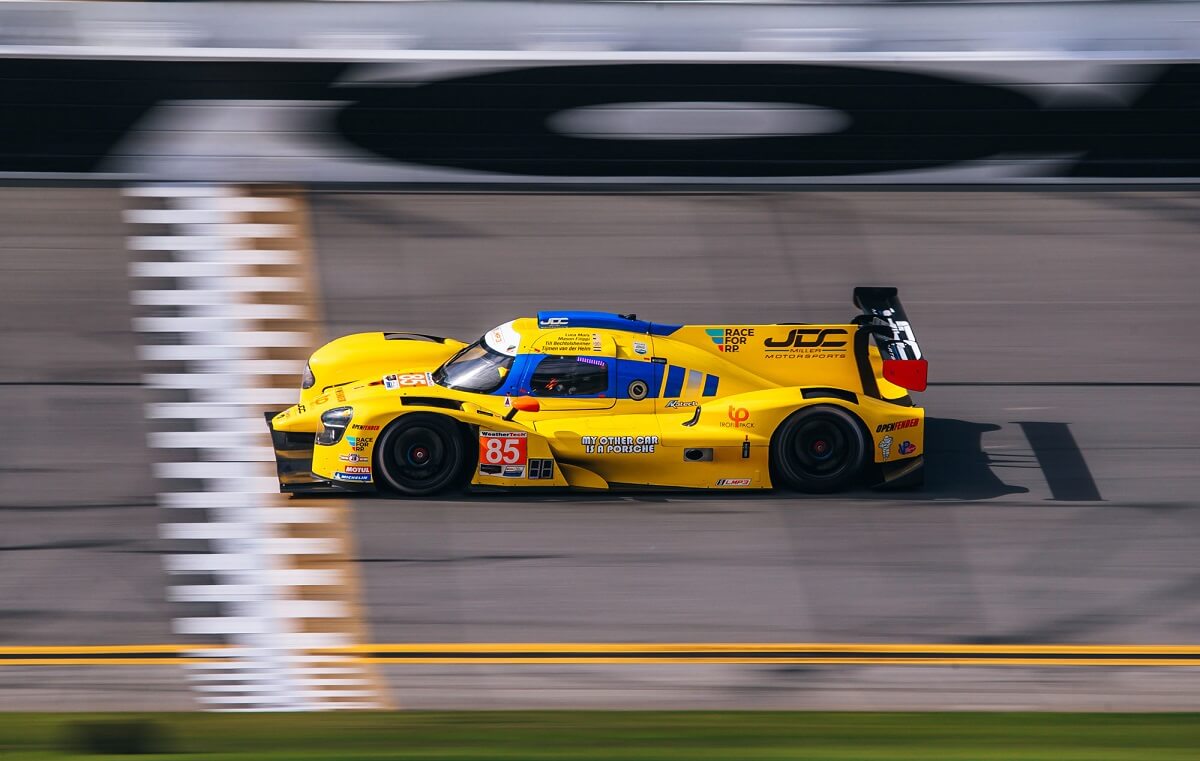
The role of LMP3 as a training series
LMP3 cars play an essential role as a training series for higher categories such as LMP2 and Hypercars (LMH). Thanks to their relatively low operating costs and simpler management compared to more advanced categories, LMP3 cars offer teams and drivers an ideal platform to acquire the necessary skills in prototype driving, race strategy, and multi-class traffic management.
Series such as the European Le Mans Series (ELMS), the Michelin Le Mans Cup, and the IMSA VP Racing SportsCar Challenge provide a competitive framework where young drivers can develop, prepare for the challenges of higher categories, and catch the attention of top-level teams. LMP3 cars are also highly sought after by gentlemen drivers who want to reach a higher level while controlling costs and benefiting from a learning-friendly environment.
By offering a balance between cost and performance, LMP3 cars continue to play a key role in developing endurance racing talent, shaping the next generation of drivers and engineers aiming for the highest levels of international racing.
Conclusion: The future of LMP3
Since their introduction, LMP3 cars have evolved to become an essential platform in endurance racing, offering an affordable entry point for teams and drivers looking to progress to more advanced categories. With the arrival of the third generation in 2025, this category is gearing up for a solid future through 2029, thanks to a new twin-turbo V6 engine developed by Oreca, which offers improved performance, better fuel efficiency, and reduced noise.
The technical and regulatory evolutions ensure that LMP3 cars remain competitive and relevant, while maintaining a balance between cost and performance. This stability allows teams to plan long-term, control their investments, and continue to train the next generation of talent for the challenges of LMP2 and Hypercar categories. The LMP3 category thus establishes itself as a cornerstone of the endurance racing ecosystem, crucial to the promotion and development of future champions.



